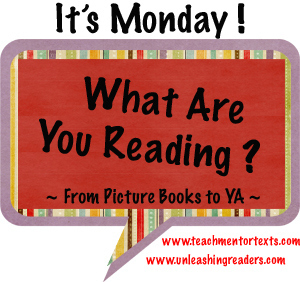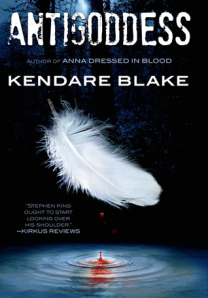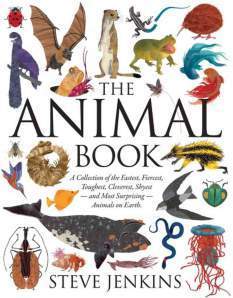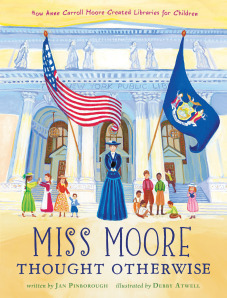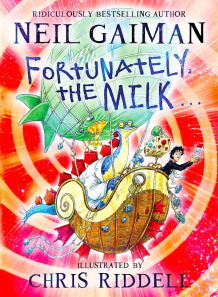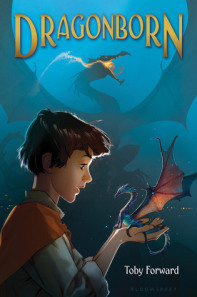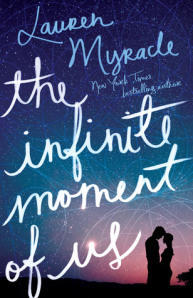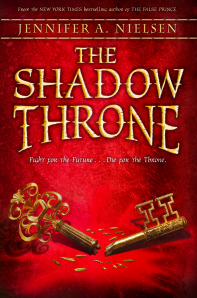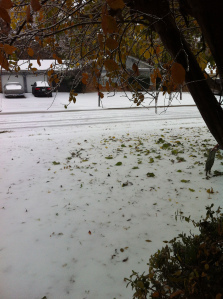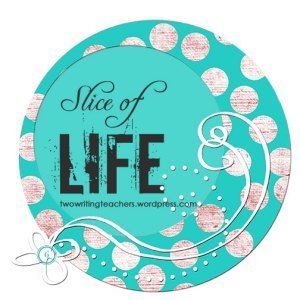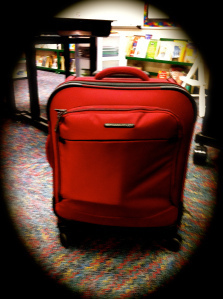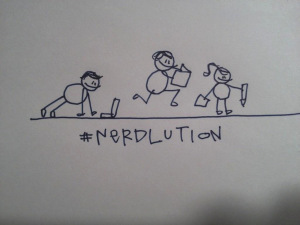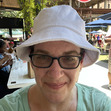Donalyn Miller's Blog, page 3
December 9, 2013
It’s Monday! What Are You Reading? December 9, 2013
As I move into the second week on my new blog, I am excited about participating in the weekly meme, It’s Monday! What Are You Reading? Visit Teach Mentor Text and Unleashing Readers to learn more about this weekly reading celebration and sharing event.
My reading life is all over the place right now. I am trying to power-read Nerdy Book Club Award nominees that I have missed before voting opens on December 15th, AND read new books I acquired during the NCTE and ALAN conferences last month. I am enjoying some great books!
Last Week’s Reading Highlights
Antigoddess by Kendare Blake.
As I posted on Twitter,
The Animal Book by Steve Jenkins
I wanted to be a vet for most of elementary school. I am still fascinated with animals. The Animal Book is the type of book ten-year old Donalyn would have pored over–looking at every elaborate cut-paper illustration, reading diagrams, and memorizing facts. A must-own for the animal-lovers in your life.
Miss Moore Thought Otherwise: How Anne Carroll Moore Created Libraries for Children by Jan Pinborough, illustrated by Debby Atwell
Anne Carroll Moore and her colleagues were trailblazers who believed in the importance of quality children’s literature and positive reading experiences for children. Through their influence, libraries developed reading rooms and library programs for children. I found this introduction to the early years of children’s library programs fascinating.
Fortunately, the Milk by Neil Gaiman
A distracted dad pops around the corner for a quart of milk and finds himself in a battle for the fate of the Universe. Hilarious and odd in all the best ways. I am a huge Gaiman fan. I read everything he writes–adult fantasy like The Ocean at the End of the Lane and Anasi Boys, and his children’s books like The Graveyard Book and Coraline. My students love his books, too. I cannot wait to share Fortunately, the Milk with them! This would make a great short read-aloud for those bleak winter days after holiday break.
This Week’s Reading Plans
I am traveling this week, and I brought a few books with me for company. I look forward to reading and sharing these books!
Dragonborn by Toby Forward
The Infinite Moment of Us by Lauren Myracle
The Shadow Throne by Jennifer Nielsen
Who knows what other interesting books will cross my path? Enjoy a wonderful week and some wonderful books!

December 6, 2013
Snow Day
My school district announced last night that we would be closed today because of ice and snow. I had already planned to miss school because of a dental surgery appointment to fix a cracked molar, but it looked liked my students wouldn’t be going to school, either. I slept through most of the storm, oblivious to the ice pellets and sleet that blanketed our neighborhood in solid sheets of ice.
My phone woke me at 6 am. The dentist’s receptionist was calling to cancel my surgery because my dentist and her staff couldn’t get to the clinic. Disappointing, but at least I wasn’t faced with pouring hot water under my car tires and finding my ice scraper. My bed was warm—a nest of husband, pets, and blankets, so I went back to sleep.
Waking up later, my mind automatically went through the endless to-do list of tasks I could possibly accomplish with a free day. I could get so much work done! Empty my email inboxes. Finish an article that’s due next week. Write lesson plans that will take me to Winter Break. Sign and address Christmas cards. Clean. I could always clean something.
Before I drank my first cup of coffee, I had filled my snow day with work plans. In other words, I turned it into every other day. Not satisfied with booking up my own day, I suggested several tasks that Don could accomplish since he would not be going to campus to take his Statistics final. Good-natured (and used to my ways), he only grumbled a little.
I am, by Nature, a worker bee. My mother raised me to believe that if you are in bed after 8 am—even on holidays and weekends—you better have a fever. I also suffer from the insecure notion that my value is linked to what I do and how much I do for other people. It is hard for me to relax. Don is a self-proclaimed slacker. He has no trouble lounging. The Grasshopper and the Ant. We joke about this, mostly. Don urges me to rest and enjoy myself and I push him to be more motivated. It’s a delicate tension between us.
I stalled about getting out of bed. Faced with a day full of work, I just wanted to go back to sleep. What would I be doing today if it wasn’t a snow day? I would be lying in a dentist’s chair getting a root canal and spending the rest of the day sleeping off anesthesia and pain. Was that the only thing that would keep me from filling every day with work? Surgery?
I made a decision—a snow day is a rare gift and I wasn’t going to waste it by being productive.
Don was thrilled. My decision to lie around all day liberated him, too.
I made new plans.
After a shower, I put on clean pajamas.
I pulled out a pile of books and journals to read and found the TV remote.
I got back in bed.
Don wandered through on occasion, checking in to chat and bring me more coffee (or cocoa, or chili, or grilled cheese sandwiches).
We watched three weeks of Walking Dead, then three days of Stephen Colbert and John Stewart.
We spent all afternoon reading–advancing though pages the only evidence of productivity all day.
Besides pet maintenance and food preparation, we didn’t do anything else.
Checking Facebook and Twitter, I admired my friends who were working harder than me today, but I squashed any urges to join them.
It was glorious.
I will tackle that to-do list tomorrow, but I must hold the memory of this lazy day. I need to remember that I can’t be productive every minute of every single day. Here in Texas, we don’t get snow days more than once or twice a year. Maybe, I need to declare my own “snow days” more often.

December 3, 2013
Bah Humbug #slice2013
One exciting thing about writing my own blog now is that I can participate in blog events and celebrations like the Slice of Life challenge at Two Writing Teachers. If you want to participate, you can link up your Slice of Life Story Post on Tuesdays or you can visit the blog and read other people’s stories. For more information on what a Slice of Life post is about, you can go here.
***********************************************************************
Digging through my dresser, I pull out t-shirt after t-shirt and begin stacking them on the floor. Don peeks into the bedroom when he hears my dramatic sighs and drawer slams, “Are you OK?”
I said, “It’s another theme day at school. Today, we are supposed to wear Christmas attire for the staff holiday photo. I am looking for that Charlie Brown’s Christmas shirt I used to have. I thought it was in here somewhere.”
Don rolled his eyes, “Another theme day?”
“I know. This is the fourteenth one this year. (Yes, I am keeping track.) It’s ridiculous.”
It might surprise you to learn that I am clothes horse (shoes, too). My conference roommates can testify. I feel more professional and put together when I dress up a bit. Growing up, my mother taught me that when you are “a curvy girl” you need to “try a little harder” when choosing outfits, so that you don’t look like “a slob.” She still expresses her dismay that I don’t wear hose and a slip every day.
I am more relaxed at school than I was when I worked in a office, but I want to choose my clothes based on weather, personal taste, and mood–not theme days.
Don helps me unfold shirts looking for Charlie Brown. I continue ranting, “Today is Christmas colors–red, green, gold, silver, white or purple (?) clothes. Thursday is Ugly Christmas Sweater Day. Friday is Polar Express Day. We are supposed to wear ‘school-appropriate’ pajamas. I bought school-appropriate pajamas for Pajama Day. I guess I need holiday pajamas this go-round.”
At my school, we are expected to participate in school-wide events and celebrations. I know that kids enjoy it when their teachers wear fake mustaches (Mustache Day), slippers (Slip Past Drugs Day), and university gear (Generation TX Week) along with them. It’s fun. The school year is long. Fun is good.
Concerned that teachers are weary of the endless theme days, our administrators have offered an additional perk. If we participate, we can wear BLUE JEANS. I’ll wear anything to school if I can pair it with blue jeans. Said no teacher ever.
We still can’t find the Charlie Brown shirt. I look at the mound of school shirts spreading across the floor–field trip t-shirts, Field Day t-shirts, UIL Team t-shirts, blood drive t-shirts–all shirts I only wear for school, usually once on the day of the event. Since I am looking for my Christmas t-shirt in here, I must have classified it as a school-only shirt, too.
Frustrated with the entire exercise and running out of time, I decide to opt out of Christmas Attire Day and suffer my colleagues’ ribbing all day because I ‘m not participating. I am sure someone will take pity on me and loan me their extra elf hat.
I can’t tell you how excited I am about this. No really, I can’t tell you.
I think teaching should be fun because teachers enjoy the work we do. If the only enjoyable days at school are the days we could wear our pajamas, there’s a problem. Perhaps, I just resent the loss of one of the last pieces of autonomy many teachers still have–the ability to choose what we wear to work.
My husband and I worked our way through school, taking low-paying food service and hospitality jobs. I have done my time wearing the same clothes as my co-workers. I want to wear my nice clothes.
As I leave for work, I show off my black pants and sweater to Don, “Hey, the sweater has a little green it. This counts, right?”

December 2, 2013
Little Red Goes to School (By Way of Boston)
Some people name their cars. I name my suitcases. My big suitcase is affectionately known as The Pet because my husband claims I drag it around like it’s on a leash. My new carry-on—purchased in a futile effort to pack less—is named Little Red. Here she is:
Little Red, along with The Pet, accompanied me to the National Council of Teachers of English (NCTE), Conference on English Leadership (CEL), and Assembly on Literature for Adolescents (ALAN) annual conferences in Boston last week. She was almost empty when I arrived in Boston, but Little Red was crammed full of books when I left.
The first time I attended the NCTE conference (New York, 2007), a friend told me that I needed to leave room in my suitcase, so that I could bring a “few” books home. In my mind, a few meant five or six books–no problem. I was ill-prepared for the piles of low-cost and free books offered by generous exhibitors. I wound up purchasing a cheap duffle bag in Times Square, so that I could lug books home.
(I also stood in line with TWO people, so that Suzanne Collins could sign and stamp a copy of her newly-released book, The Hunger Games, but that’s another story.)
I learned my lesson. While I don’t feel the need to grab mountains of books in the exhibit hall, I manage to acquire a “few” during the conference every year.
Explaining to my students why I would miss three days of school right before Thanksgiving, they were curious, ”Will you meet any famous authors while you are there, Mrs. Miller?”
“If you see Rick Riordan, will you ask him to sign a book for us?”
“Are you going to see where the Boston Tea Party was?” (I teach American History, too, so this isn’t as random as it seems.)
“Is Tom Angleberger going to be there?”
Trying to answer their questions as best I could, I told my class, “I am not sure who is going to be there, but I imagine I will have some new books to share when I get back.”
I had spoken the magic words: new books.
I wish every children’s author could have heard my class in that moment.
I wish every naysayer who says kids don’t read could have heard the children cheer when I told them we would have more books to read and share.
Mason asked, “How many books do you think it will be? How will you carry them?”
“I guess I will put them in my suitcase, Mason,” I assured him.
Mason grinned, “You should bring your suitcase to class and we can help you unpack it!”
This morning, I loaded up Little Red with books I picked up during my trip, as well as some books I found for the children during the break. Wheeling my suitcase across the school parking lot, no one gave me a second look. I guess teachers bring all sorts of weird props to school.
Parking Little Red by my desk, I greeted my students as the came to class. It didn’t take long for them to notice a bright red suitcase.
Kenzie shook her head, “You really did it. You brought us a suitcase full of books, didn’t you?”
I whispered to her, ” I found a copy of Who Is Michelle Obama? in a bookshop. I know you’ve been waiting for it. Let’s get it out.”
Kenzie beamed and fought off classmates eager to see inside Little Red.
Looking for an orderly, but fun way for my students to investigate the books, we conducted a musical chairs-style book party. It’s a lot like my friend, Colby’s speed dating with books idea or Janet Allen’s Book Pass. Students carried their to-read lists and a pencil. I placed one book on every desk. We sang holiday songs and jingles at the top of our lungs while moving around the room.
When I rang my desk chime, students stopped at the nearest desk. Students examined the book at their desk for two minutes and recorded the title and author of any book that interested them. After two minutes, we repeated the process–moving around the room and looking at books. We had a blast. Everyone added books to their lists and all of our new books were previewed.
As my students filed out at the end of class, several patted Little Red and complimented her, “Thank you, Little Red, for the great books!”
The symbolism of a bright red bag full of gifts for children was not lost on me in that moment.
Thank you, Little Red. Every time I pack you, I will remember this day and smile. You helped me show my students one more time that reading is worth celebrating.

December 1, 2013
My #nerdlution: Start a (New) Blog
I fell asleep early on Thanksgiving night. Too many side dishes. Too many glasses of wine. Too many relatives. When I checked Twitter on Friday morning, it was clear I had missed a great conversation. Friends Colby Sharp, Katherine Sokolowski, Franki Sibberson, and Chris Lehman challenged each other to set goals and support one another for the next 50 days. Dubbed #nerdlution by its founders, this public commitment creates a community that encourages participants and holds them accountable. In just a few hours, #nerdlution tweets and posts popped up everywhere as bloggers and tweeps joined the movement. Yes! I should have goals.
What are my goals?
I can commit to walking more. My family enjoys our evening walks, but we lose our motivation when the thermostat rises above 90 degrees during the summer. We let our walking habit fall away for months at a time. Sarah, Don, and I updated our Zombies, Run! app and plan to run tonight. Running from moaning zombies in the dark. That’s motivating!
I don’t like exercising, but I know I feel better when I do it. Besides, walking frees my thinking. Ideas for writing often bubble up when I spend time outdoors.
About the writing.
I began my professional writing career as a blogger for Teacher Magazine. When invited to blog after a successful run as an “Ask the Mentor” columnist, I remember thinking, “I won’t tell them I don’t know the first thing about blogging.” Looking back, I think of “The Book Whisperer “blog as a column. I spent hours each week crafting essays about teaching and reading. Not casual writing–like I imagine blogging.
I got my first book contract because of Teacher Magazine and I tried out a lot of ideas on the blog that later wound up in the book, The Book Whisperer. I found the blog limiting at times. I internalized a need to write about “big ideas” all of the time–poor education policies, new research findings, the sorry state of reading instruction. Sometimes, I just wanted to write about how much I loved Breadcrumbs by Anne Ursu. When Teacher Magazine and I amicably parted ways in 2012, I rarely posted anymore.
By this time, The Nerdy Book Club was roaring along and I devoted my infrequent blogging impulses to our community blog. I was working on Reading in the Wild, and I felt urges to write something that wouldn’t pass through a copyeditor and production designer before anyone read it.
Colby and Cindy still allow me a monthly spot and trust that I will turn in something decent. I know I give them heart attacks because I usually begin my posts three hours before they are due. Nerdy is a good place for me–I can tie anything (and I mean anything) back to reading. I can talk about my students and our shared book love. It’s a nice home for an itinerant blogger. Nerdy doesn’t give me everything, though. I still like questioning education policies. I still like the immediacy of writing when I am inspired.
Six years as a “blogger” and I, Donalyn Miller, have never had a blog that is completely mine. Looking at the blogs of dear friends and colleagues, I am confident every topic I might explore is in good hands, already. Teri Lesesne switches between education policy rants and book reviews on two different blogs. Katherine writes beautifully about her classroom. Colby and John Schu celebrate books and the authors who write for young readers. The world doesn’t need me to blog.
But I do.
I miss opening my brain and my browser and putting something out there. I miss working my way through seedling ideas. I still don’t see myself as a blogger, but I can make a #nerdlution to try.

September 30, 2012
The Next Chapter
Four years ago, Education Week Teacher (formerly Teacher Magazine) invited me to appear as a guest columnist for their Ask the Mentor series. I had never written for publication and I was thrilled about the opportunity to share my ideas about inspiring children to read. One column turned into three and Ed. Week invited me to join their regular bloggers. The Book Whisperer blog led to the publication of my first book, The Book Whisperer, and I have been writing, sharing, and learning with you ever since.
I will always be grateful to Education Week , who took a chance on me--an unpublished, unknown, suburban teacher with unusual ideas about reading instruction. Education Week provided me with a voice and initial audience for my writing, and I have benefited from our partnership. Although I still have a lot to say and a lot to learn, this post will be the last installment of The Book Whisperer blog. I have enjoyed writing for Education Week and I look forward to collaborating with them in the future if the opportunity appears.
For now, I will continue contributing on a regular basis to The Nerdy Book Club blog. When my friend, Colby Sharp, and I started Nerdy last year, we had no idea what an incredible, vibrant community the blog would become. I believe in Nerdy's mission--that every reader has value and a voice in our community. The Nerdy Book Club invites teachers, librarians, administrators, literacy coaches, authors, illustrators, booksellers, parents, children, and all readers to share their love of reading and participate in a committed community focused on encouraging children to read more and celebrate books.
Reading Nerdy's daily posts from diverse voices representing every possible corner of the reading world feeds my teaching heart, challenges my thinking, and helps me discover new books and resources for my students and me. I invite you to join the conversation and contribute your ideas, too.
In addition to Nerdy, I will continue to co-write a monthly column with Alyson Beecher for Scholastic's Principal to Principal E-Newsletter. Our column focuses on school-wide reading initiatives like book clubs, book talking, and promoting reading throughout the school day--providing both classroom and campus-wide suggestions.
Through social media like Twitter (My tweet ID is @donalynbooks) and Facebook (The Book Whisperer page), I find daily support and learning from thousands of professionals using social media to enhance our teaching and advance our learning through collaboration. I look forward to learning with you in these forums.
Finally, I would like to thank all of you for reading this blog, sharing it with others, and contributing comments over the years. I have grown as a teacher and a writer because of you. We are colleagues, united in our common goal--to improve children's lives through reading and books. Our shared journey will continue.





September 9, 2012
What the Kardashians Taught Me About Reading Instruction (No, For Real)
I don't watch the Kardashians and I admit that I cannot tell them apart. Thankfully, my colleague, Christopher Lehman, found a way to connect the reality TV family with my passion for reading. I hope you enjoy Chris's humorous and insightful guest post!
Christopher Lehman (@iChrisLehman) is an author, a speaker, and a lead staff developer with the Teachers College Reading and Writing Project at Columbia University. His newest book, Energize Research Reading and Writing, is available now. Find him at his new blog.
What the Kardashians Taught Me About Reading Instruction (No, For Real)by Christopher Lehman
This all started on Twitter when Donalyn, I and a few friends somehow got on the topic of the Kardashians. And by "on the topic," I mean: I brought it up.
Which got me to thinking--and please follow me on this one--we could learn a lot about reading instruction from this particular reality TV family. Or perhaps my real message here is: if we take up a metaphor - even seemingly as non sequitur as Kim, Kourt, and Khloe - we can see our instruction in a new light.
Brand Yourself as a Reader, So Your Students Will Emulate
Kim Kardashian is on television, social media, billboards, magazines, ads on sides of buses, even Oprah. Love her or hate her, she is everywhere. And everywhere she shows up she is styled to be glamorous, branded to be the very fashionable friend you maybe, just maybe could have in your life if you shopped at the same places and bought the same things. We need to take a lesson from Ms. K and brand ourselves as readers just as carefully so our students have that vision to aspire to.
Donalyn is the consummate example of this, when you think "Donalyn Miller" you instantly think "reading." Why? Because she talks about books, posts about books, asks you about books, writes books about books, she is a one woman reading marketing blitz. So ask yourself, are you known as "a reader"? Do people look at you and think "that guy's got to know a great book for me to read next"? Do your students think "when it comes to reading, she's the real deal."
So this year, brand yourself as a reader:
Have a predictable opening line. My friend Audra, for example, quite regularly begins conversations by asking, "What are you reading?" She has done that so often with me, that I have started doing the same thing with others. It's as catchy as a catch phrase.
Any press is good press, as long as it's press. Don't think you can only talk about reading when you've just finished a great book. Even talking about how hard you are finding it to make time to read, or how you just can't find a good book, is still a book conversation: "I have four half-read books on my Kindle that I just can't seem to find the time to read. I'm particularly feeling bad about Out of My Mind by Sharon Draper, because Melody, the main character just shocked her entire class and I'm nervous to find out what will happen next..." Ta-da, you're talking about reading. Even if you feel ashamed.
Post your reading life anywhere you can. Place a "I'm currently reading..." white-board on your classroom/office/bedroom door. Post reviews on Twitter or Goodreads or Nerdy Book Club or anywhere you can think to. Wallpaper your room with book covers from books you have read or want to read next. Be as annoying-mazing with your branding as a Kardashian SlimFast ad followed by a Kardashian perfume ad followed by a preview of their next super new episode. Be everywhere.
If you are branding yourself as a reader, it also means you cannot dilute the brand by engaging in things readers just never do. Saying "I'm a reader!" and then forcing your children to turn to page 167 of Chapter 18 of the Language Arts textbook is like Kourtney posing for Us Weekly without make-up--it just doesn't happen on purpose. An anthologized textbook doesn't know your students, their strengths, interests or needs. Walk the walk, not just the talk. Readers don't let readers skim to answer chapter questions.
Treat Your Library as a Marketing Genius Would, To Attract Your "Buyers"
We are all consumers, our students are as well. We must be enticing, intriguing, flat out marketing machines. If you see your classroom (or home) library as simply "a place to hold books" and your role as "re-sorter of those books" then, my friend, you are very boring. Also, you are not living up to mama-manager, Kris Jenner's example: take every opportunity to promote your clients and your products.
This year, look at your library as if you need to sell those books, not just house them:
Rotate your stock often. Put some titles in more prominent places, really highlight books that match your current study, and move untouched titles in the place of ones that everyone is reading. Then do the whole thing again next month.
Special events boost "sales." Perhaps make some books "special" that students have to wait for. A section of your library cordoned off by "caution" tape, stating that those new nonfiction titles will be made public in three weeks (while making sure they are just visible enough to build intrigue).
Poll your audience often and be responsive. Instead of labeling shelves "fiction" and "nonfiction." Ask your students what kinds of books they love, then slap those tags right on the shelf. "Drama, Drama, Drama" and "Scary Murder Books" are some of my recent favorites. Enlist focus groups of students to help you review, restyle, and restock your library often.
A good manager also has an ever expanding product line and list of appearances. If you go to the trouble of setting up a gorgeous library, don't just check it off the list. Instead, keep growing it (and when you run out of space, help the classroom next door or even one across town grow, too.) I wrote a post on the "book gap" and reasons for reading here (which contains some helpful statistics if you are making the case for more books to others!).
Reality Means Real (Mostly), Present It As Such
The Kardashian family is most well known for having cameras follow them everywhere, nearly all of the time. We see every fight, every joke, every move (and yes, maybe my wife and I make it a point to see every episode. Don't judge.). The point is that they aim to be real, well mostly real. Our reading instruction, then, needs to take up that same lead. To be as close to real as possible.
There is always a place for scaffolding in instruction, for sure. I doubt that when you bend over to tie your shoe as an adult you first say, "Make a bunny with the laces. He runs aaaarrrooound the tree. Jumps in the hole. Close that burrow up tight. Now my shoe is tied!" You do not say that today, but you may have said that at one point to do shoe-tying well. I am completely in favor of providing supports for students, like teaching them to jot about their reading on post-its, then eventually in notebooks, all to practice metacognition that is eventually in their heads. But, even pseudo-real reality TV has a lot of real in it.
Anything you aim to do in reading instruction should go through a "does this feel mostly real?" test that I image the producers of any more staged reality show goes through (I'm not suggesting Kardashians is one of those, lawyers).
Ask, "Would this be how people normally act?" Meaning, does that funky seven-bubble chart worksheet feel exactly like, or a close precursor to, how you actually read and think about a text? If no, if it doesn't feel on the line to real--pseudo-real--then it's most likely not worth teaching with it.
Ask, "Is it mostly real?" You improve your reading by reading. Not just by listening to people talk about reading, not by filling out worksheets about reading. By reading. This time is the most essential. Reality reading means time for reading, really.
Lastly, any major television production has tons and tons of behind the scenes work to have it run smoothly (seriously, just watch the Kardashian episode when Oprah came to interview the family - their house was taken over by Oprah's crew and equipment). You are your readers' set designer, lighting tech, director, producer, acting coach. Every effort you make to live as a reader, design spaces that inspire reading, and support real reading time, will in turn make each one of your students a star.
I'd love to hear more about ways you are making reading a celebrity affair and I know others would to. Please share your stories and ideas in the comments.





August 16, 2012
Books That Build Community
Daydreaming about the new school year, I envision our classroom as a supportive place where my students and I take risks and learn. I see caring people who embrace our differences and discover what we have in common. I think about laughing and crying together. My students and I will become a family--bonded by shared experiences in a community where everyone has value.
Successful classroom communities need cultivation to flourish. What my students need to learn is important, but the conditions that allow learning to happen concern me more. While standards and learning targets dictate the content I must teach, I construct the classroom environment. How my students and I interact creates a climate that supports learning and provides social and emotional safety.
During the summer months, I read and reread books I might use in our classroom and consider how each text serves my students. Reading books together creates shared experiences that foster community-building and literacy development. Looking through my summer reads and booklists, I have selected a few titles to launch our learning year.
Communities of Readers and Writers
Ask Me by Antje Damm. From commonplace ("Who is your best friend?") to thought-provoking ("Whom do you miss?") this nifty book of questions invites children to reveal personal information, reflect on their lives, and learn more about each other. Engaging illustrations accompany each question and provide further response opportunities. Designed as a conversation starter between parents and children, Ask Me provides a unique resource for writing and discussion topics.
BookSpeak!: Poems about Books by Laura Purdie Salas. This collection offers 21 poems on everything bookish from characters to indexes to falling asleep while reading. At turns humorous and informative, BookSpeak! is the perfect text to launch a reading year and reinforce a love of reading.
Forgive Me, I Meant to Do It: False Apology Poems by Gail Carson Levine. Modeled after William Carlos Williams' "This Is Just to Say," Levine presents over 40 insincere apologies for misdeeds. Children, often encouraged to apologize when they don't want to, will appreciate Levine's honesty and humor and consider writing false apologies of their own.
Communities Who Value All Members
Hound Dog True by Linda Urban: Shy and self-conscious, Mattie Breen dreads starting another school year. Apprenticing herself to the school custodian, her Uncle Potluck, Mattie hopes to avoid her classmates when school begins. Brilliantly written, Hound Dog True is a powerful book to share at the beginning of the school year when many students feel apprehensive and worry about finding friends.
Out of My Mind by Sharon Draper: Eleven year-old Melody has cerebral palsy. She lives in a world of silence-- unable to talk or write. Although she is extremely intelligent, her classmates and more than a few teachers, see her as simple-minded. Out of My Mind sparks powerful conversations about embracing every student in our schools and valuing every child's right to learn.
The Strange Case of Origami Yoda by Tom Angleberger: Dwight is a misfit, so weird that the other sixth graders avoid him. For mysterious reasons, Dwight creates an origami Yoda puppet, wears it on his finger, and uses it to dispense advice. The other kids usually avoid Dwight, but they are drawn to Yoda's seemingly helpful wisdom. This book sends the message that all kids have something to contribute. Read aloud The Strange Case of Origami Yoda; then introduce students to Angleberger's sequels, Darth Paper Strikes Back and The Secret of the Fortune Wookiee.
Wonder by R.J. Palacio: Auggie Pullman is born with Treacher Collins, a chromosome disorder that results in severe facial deformities. He is homeschooled for many years because of his ongoing need for extensive surgery and his parents' fear about how Auggie will be treated. When Auggie begins fifth grade, his parents decide to send him to school. Wonder is a remarkable book about courage, love, and the difference one person can make in the lives of others.
Communities Who Have Fun
Interrupting Chicken by David Ezra Stein: It's time for little red chicken's bedtime story, but she's so enthusiastic about the book that she can't help interrupting Papa. If there is a chicken on the cover, you can predict the book is funny. Children will see themselves in this clever story. Use this book as a springboard for conversations about classroom discussion etiquette or just enjoy the chickens.
I Want My Hat Back by Jon Klassen: Bear has misplaced his pointy red hat. Questioning the other woodland animals, the distracted Bear finally discovers the location of his hat. Amused by the dark and hilarious surprise ending, my sixth graders declared I Want My Hat Back one of their favorites. Klassen takes his deadpan visual humor into the ocean in this year's follow-up, This Is Not My Hat.
The Wonder Book by Amy Krouse Rosenthal. What do you wonder? This random assortment of riddles, word games, and poems offers answers to our wonderings and encourage inquiry. Short selections are perfect for transitions, energizing breaks, and the beginning or end of class.
Communities Who Care about the World
14 Cows for America by Carmen Agra Deedy: In 2002, Kimeli Naiyomah returned home to his Maasai village from New York City with news of the 9/11 terrorist attacks. Moved by the horrific story, the Maasai respond by donating their most sacred and valuable possessions, fourteen cows, to America. A powerful book about compassion and hope, 14 Cows for America shows our connections in a global community.
A Bus Called Heaven by Bob Graham: One morning, Stella discovers an abandoned bus outside her house. The bus, labeled Heaven, inspires Stella's diverse neighborhood, who turn the bus into a community space. This is a sweet book about one community and the dilapidated--but still useful--bus that brings them together.
Laundry Day by Maurie J. Manning: When a red cloth floats down from the clotheslines overhead, an honest shoeshine boy climbs from window to window in a NYC tenement building searching for the cloth's owner. The boy's journey up the building celebrates America's rich immigrant heritage and the importance of honesty and caring.
I look forward to meeting my new students next week. I hope you enjoy a marvelous new school year in your classroom and school communities.





July 25, 2012
Guess My Lexile
What do Jeff Kinney's popular Diary of a Wimpy Kid and Ray Bradbury's classic Fahrenheit 451 have in common? What about Gossip Girl: A Novel, Cicely von Ziegesar's catty romance and The Great Gilly Hopkins, Katherine Paterson's 1979 Newbery Honor book? While clear distinctions exist between each book's literary merit, age appropriateness, and reader appeal, these titles possess one similarity--they sit within the same Lexile text complexity band.**
Well-meaning educators, concerned about increasing text complexity and reading rigor, engage in this game of "Guess My Lexile" when denouncing the low-reading level of young adult literature, elevating certain titles over others, or dictating book purchases and recommended reading lists. But looking at just a few examples reveals problems when narrowly evaluating texts by readability number alone.
The Lexile Framework for Reading by Metametrix provides quantitative assessment of both students' reading levels and texts' complexity. Students receive a Lexile measure from certain reading tests. Books and other texts receive a Lexile measure from a software tool, the Lexile Analyzer, which evaluates word frequency and sentence length. Many schools use Lexile measures to assess students' reading levels and match students with appropriately rigorous reading material.
I have no issue with assessing students' reading levels and identifying text complexity. As a teacher, I find such information helpful when determining my students' reading ability and what books might fit them. What concerns me is that in many situations, Lexile measures become the sole factor in book selection and recommendation.
While identifying readability can be useful when evaluating textbooks, guided reading texts, or other teaching materials, selecting books for classroom instruction and recommending books for independent reading are two different processes. Avid readers do not always read at the edge of their competence, traveling through increasingly more difficult texts as leveling systems proscribe (Carter, 2000). Given free choice, readers select reading material according to their interests, preferences, background knowledge, purposes for reading, and personal motivation.
I hear horror stories about teachers and librarians rigidly enforcing Lexile bands--preventing children from reading books that aren't at their Lexile level: Students can't read an entire series because every book isn't at their Lexile. Students can't use sections of school and classroom libraries because the books are too easy or too hard (according to Lexile measures). Parents receive Lexile reading lists for their children with strict instructions to exclusively use these lists when purchasing books.
In cynical moments, I picture a Lexile store selling tattoo kits, so over-zealous educators can brand students with their Lexiles. Wouldn't this make trips to the library easier for everyone?
Investigating Lexile measures further, imagine my surprise when I found this information on Metametrix's website:
"Many other factors affect the relationship between a reader and a book, including its content, the age and interests of the reader, and the design of the actual book. The Lexile text measure is a good starting point in the book-selection process, with these other factors then being considered."
Addressing questions such as, "What do Lexile measures tell me about grade appropriateness?" "Why do some great books have low Lexile measures?" and "What is the relationship between grade equivalents and Lexile measures?" I found several informative videos and researched-based responses on Metametrix's website, which reinforce that Lexile measures do not tell us everything we need to know about texts or students. With Lexile measures touted as a key indicator of text complexity as defined by Common Core State Standards, we must critically consider what Lexile bands offer teachers and students, and what they don't.
Overreliance on reading level systems hinders children from learning how to self-select books. Bookstores, libraries, and Grandma's bookshelf aren't leveled. Beyond students' and books' reading levels, we must consider content and interests when selecting materials and recommending books for independent reading. Slavish devotion to numbers doesn't benefit readers.
Is this practice employed because it's better for kids or just easier for adults? What about children who find their reading experiences limited when Lexile numbers dictate their book access and choices? Looking at a child's face or a book's cover, I see possibility, not a number.We can't shortcut or disregard knowing books, knowing readers, and building connections between them.
Reading leveling systems like Lexile, DRA, and Guided Reading provide teachers and librarians with one measure for making book recommendations and supporting students as they self-select books, but children shouldn't wear their reading levels like a badge and become defined by them.
Do we teach children how to preview and evaluate books for themselves or teach them that reading and book selection belong to school and we can't trust them with it?
For additional commentary about Lexile, reading level systems, and text complexity:
"The Lexile Framework: Unnecessary and Potentially Harmful" by Dr. Stephen Krashen
From ASCD's Educational Leadership, "The Challenge of Challenging Texts" by Timothy Shanahan, Douglas Fisher, and Nancy Frey
"Lamentations from the Lex-aisle" by Paul W. Hankins
From School Library Journal, "Formula for Failure: Reading Levels and Readability Formulas Do Not Create Lifelong Readers" by Betty Carter
**According to Titlewave:
The Diary of a Wimpy Kid 950
Fahrenheit 451 890
Gossip Girl 820
The Great Gilly Hopkins 800





July 10, 2012
2012 Amelia Elizabeth Walden Book Award Finalists Announced
Are you looking for high-quality, life-affirming books for young adults? ALAN's Amelia Elizabeth Walden Book Award for Young Adult Fiction is the best YA book award list you may not know.
Reading over 300 titles, this year's Walden Award committee officially announced their 2012 award finalists yesterday. You can see the press release here. Check out these outstanding titles and recommend them to the teens in your life.
The 2012 Amelia Elizabeth Walden Book Award winner will be announced next week and I will update this post at that time.






